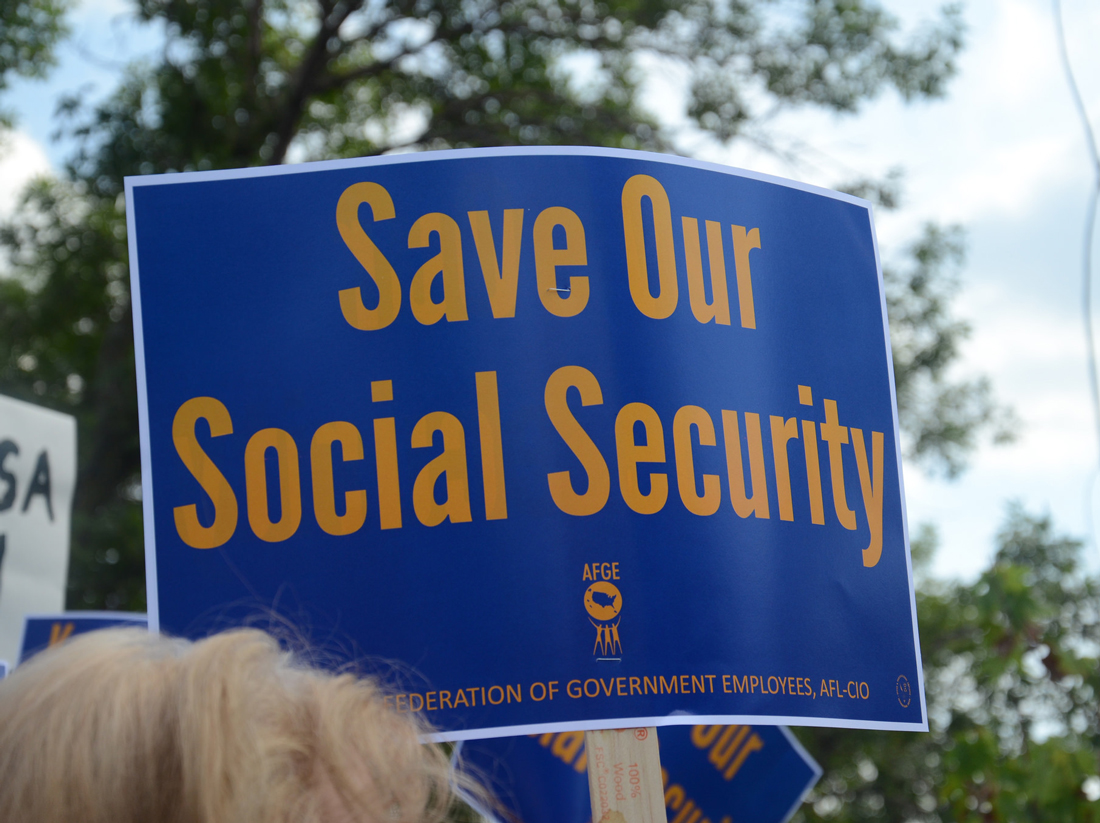WASHINGTON — Record-low yields on U.S. Treasurys endanger the long-run solvency of Social Security and the future retirement benefits for younger generations of Americans, economists say.
Newer Treasury bonds held by the trust fund have been earning less for years, the consequence of sluggish economic growth and persistently low interest rates. The Federal Reserve has kept its benchmark short-term rate at or near zero for more than seven years in an effort to stimulate the economy.
Even with the Fed’s extended easy-money approach, the U.S. economy has not grown fast enough to generate the necessary tax income to help fund all its responsibilities, including Social Security for current and future retirees.
“The existence of low interest rates because they’re caused by a weak economy has been bad for Social Security,” said Barry Bosworth, an economist at Brookings Institution and onetime adviser to President Jimmy Carter.
Unless changes are made, the lifeline for millions of retirees and disabled persons would not be funded for Generation Xers when they retire in the 2030s, according to a recent report by the custodians of the Social Security system. That generation was born from the mid-1960s to the mid-1970s.
As a fix, economists have suggested delaying the retirement age and raising the cap on payroll taxes. Those and other proposals have not gotten very far, however.
Reducing benefits is anathema — for now. Both major party presidential candidates, Donald Trump and Hillary Clinton, have voiced opposition to lower payouts.
Something will have to be done soon, experts warn. Mounting payments of benefits due to an aging population and longer life expectancy, coupled with a lackluster economic recovery since 2010, would soon start draining the Social Security trust fund faster than it can be replenished.
By 2034, Social Security’s $2.9 trillion reserves could be depleted.
One big problem: shrinking investment income. New investments purchased by the trust funds have been earning less than 3% annually since 2009. Yields have fallen every year from 5.3% in 2007 to 3.4% in 2015.
What’s more, the trust fund only invests in U.S. Treasurys whose yields have been suppressed by tepid economic growth and unusually strong demand by Americans and foreigners alike looking for safe investments. Interest rates fall on Treasurys when demand for them increases.
The benchmark 10-year Treasury yields an all-time low of 1.51%, compared with about 4% before the Great Recession and 6.8% 20 years ago.
Low interest rates aren’t the only issue. There’s fewer and fewer workers earning enough money and paying enough in taxes to support a higher number of retirees.
Last year, 2.8 workers paid for one retiree’s benefits, down from 3.3 in 2007. The ratio is expected to slide to 2.2 in 20 years.
“Productivity and demography have a big effect on the long term finances of Social Security,” noted Ronald Lee, an economics professor at University of California, Berkeley.
If that continues benefit payouts may soon exceed the tax income that supports the system.
Some experts support elimination of the cap on taxable wages as one approach to slow the Social Security drain. Getting rid of the cap would reverse the decline in the percentage income that the wealthy pay into Social Security.
In 1983, for example, only about 10% of personal income was shield from Social Security taxes. By 2014 it had gone up to 17%. High earners only pay Social Security taxes on the first $118,500 of income, but their wages have been rising notably faster compared to other Americans.
Ultimately, the best solution is to find a way to restore U.S. growth back to historic levels. The economy has expanded by an average of 2% a year since 2010, well below the nation’s long-run 3.3% average. So far the search for an answer has been elusive.
“We haven’t found any alternative mechanism to drive growth after the housing bubble in 2007,” said Dean Baker, co-founder of the Center for Economic and Policy Research.
Photo at top: Union activists from the American Federation of Government Employees rallied at the Minneapolis Social Security Field Office in August, 2014. (American Federation of Government Employees/flickr)


